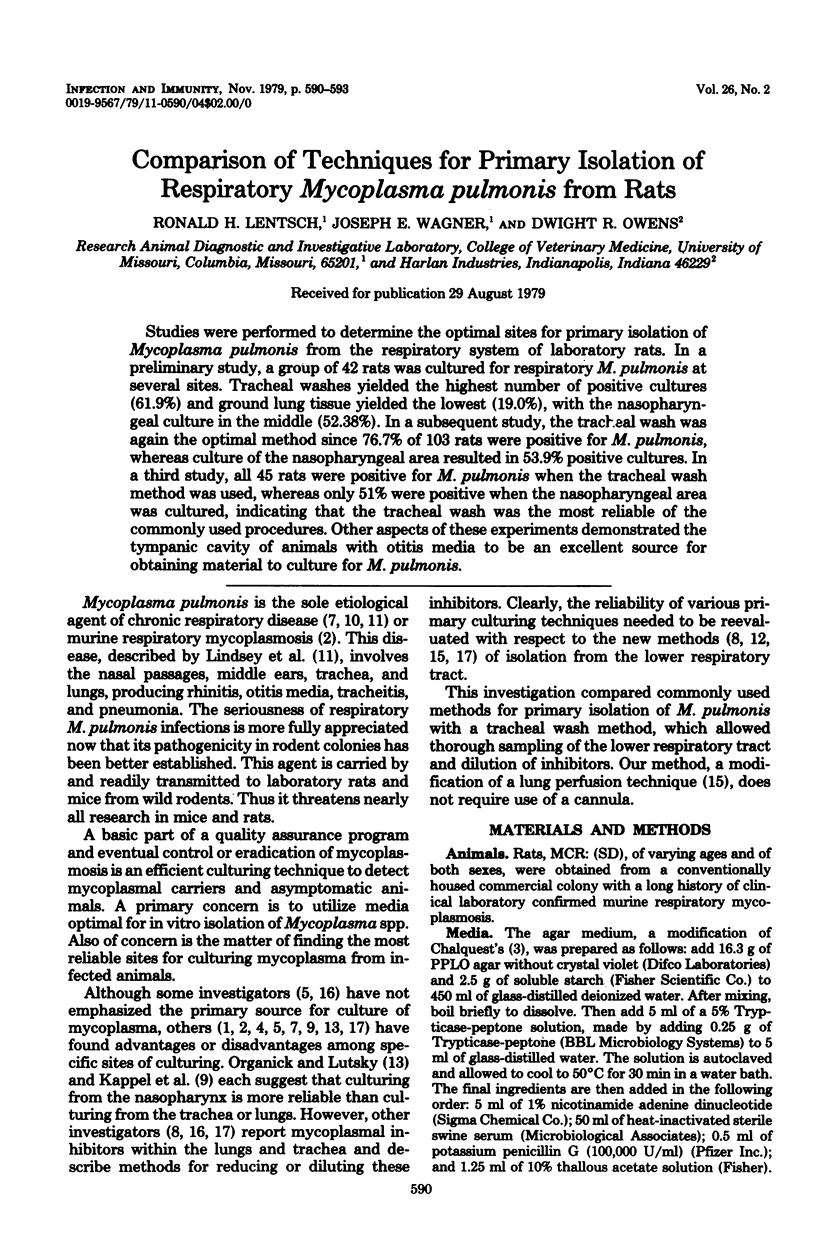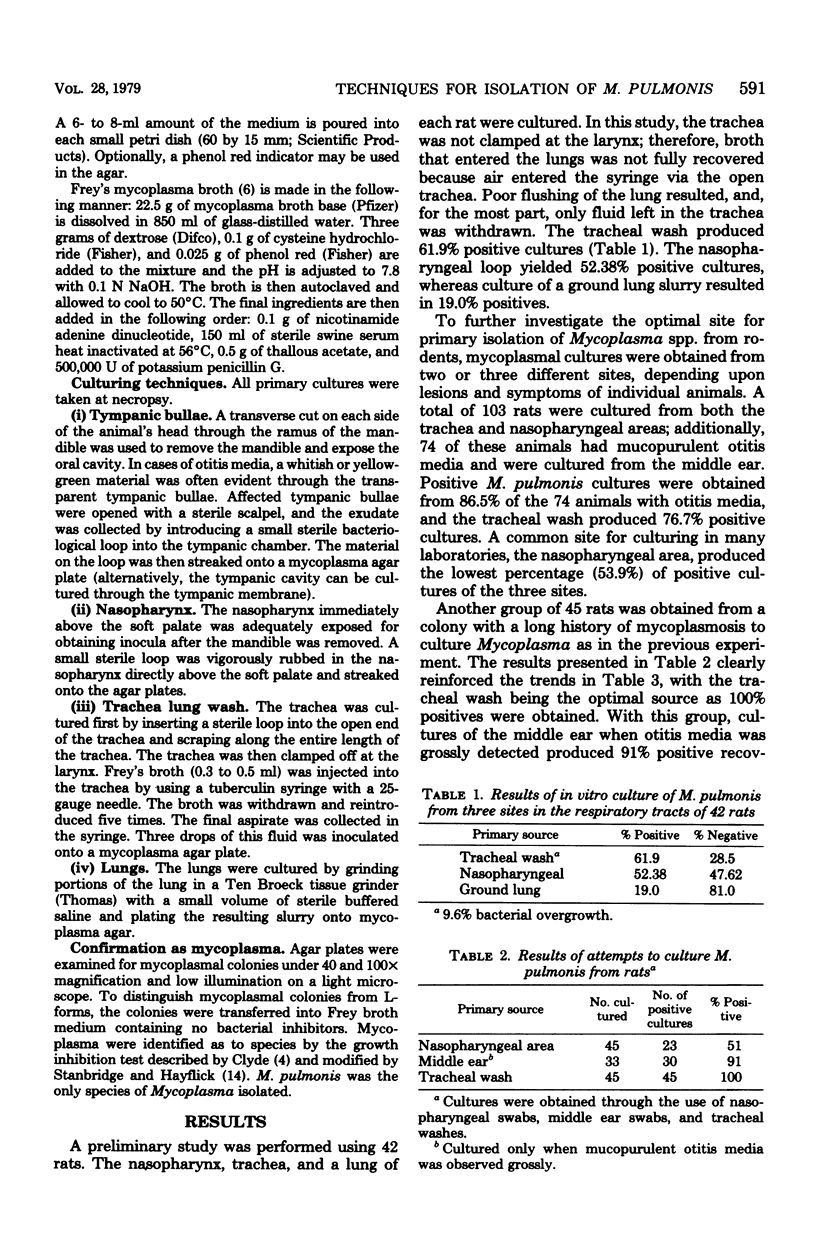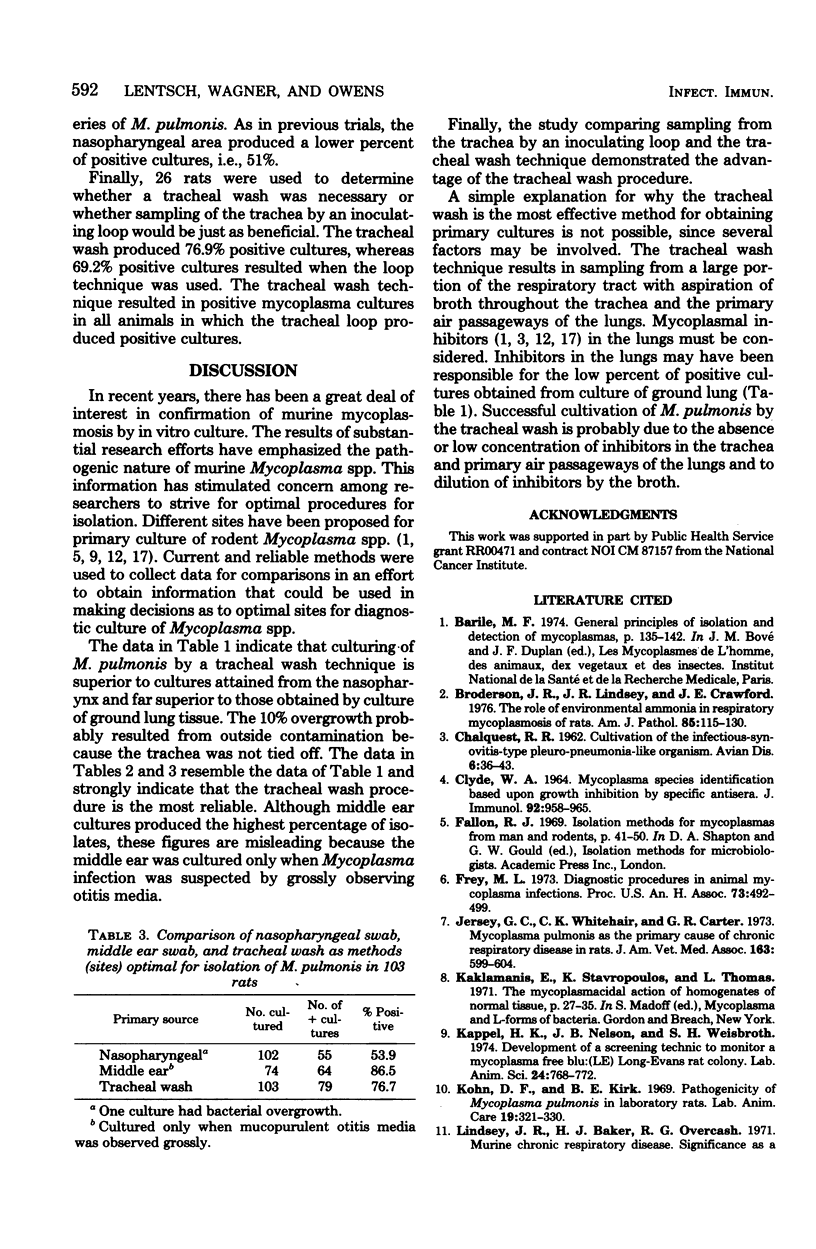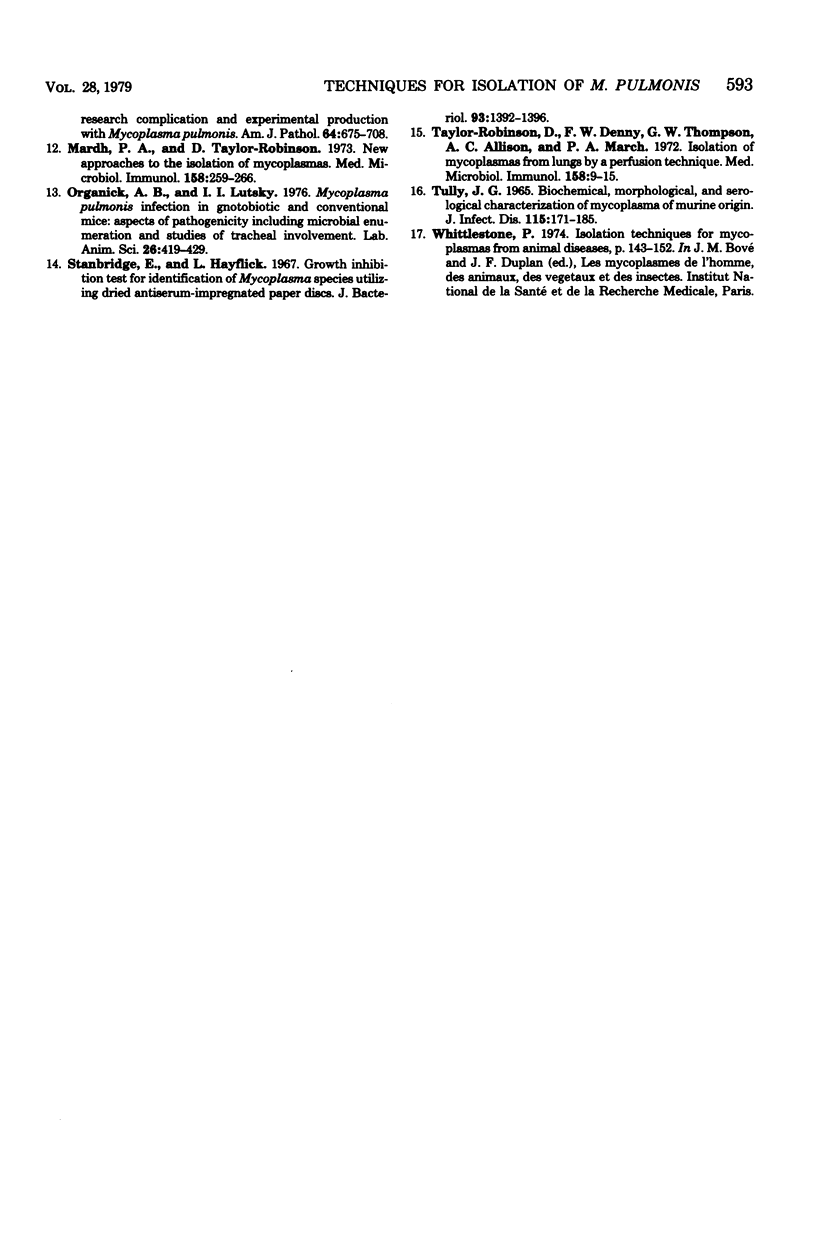Abstract
Studies were performed to determine the optimal sites for primary isolation of Mycoplasma pulmonis from the respiratory system of laboratory rats. In a preliminary study, a group of 42 rats was cultured for respiratory M. pulmonis at several sites. Tracheal washes yielded the highest number of positive cultures (61.9%) and ground lung tissue yielded the lowest (19.0%), with the nasopharyngeal culture in the middle (52.38%). In a subsequent study, the tracheal wash was again the optimal method since 76.7% of 103 rats were positive for M. pulmonis, whereas culture of the nasopharyngeal area resulted in 53.9% positive cultures. In a third study, all 45 rats were positive for M. pulmonis when the tracheal wash method was used, whereas only 51% were positive when the nasopharyngeal area was cultured, indicating that the tracheal wash was the most reliable of the commonly used procedures. Other aspects of these experiments demonstrated the tympanic cavity of animals with otitis media to be an excellent source for obtaining material to culture for M. pulmonis.
Full text
PDF



Selected References
These references are in PubMed. This may not be the complete list of references from this article.
- Broderson J. R., Lindsey J. R., Crawford J. E. The role of environmental ammonia in respiratory mycoplasmosis of rats. Am J Pathol. 1976 Oct;85(1):115–130. [PMC free article] [PubMed] [Google Scholar]
- CLYDE W. A., Jr MYCOPLASMA SPECIES IDENTIFICATION BASED UPON GROWTH INHIBITION BY SPECIFIC ANTISERA. J Immunol. 1964 Jun;92:958–965. [PubMed] [Google Scholar]
- Frey M. L. Diagnostic precedures in animal mycoplasma infections. Proc Annu Meet U S Anim Health Assoc. 1973;(77):492–499. [PubMed] [Google Scholar]
- Jersey G. C., Whitehair C. K., Carter G. R. Mycoplasma pulmonis as the primary cause of chronic respiratory disease in rats. J Am Vet Med Assoc. 1973 Sep 15;163(6):599–604. [PubMed] [Google Scholar]
- Kappel H. K., Nelson J. B., Weisbroth S. H. Development of a screening technic to monitor a Mycoplasma-free blu:(LE) Long-Evans rat colony. Lab Anim Sci. 1974 Oct;24(5):768–772. [PubMed] [Google Scholar]
- Kohn D. F., Kirk B. E. Pathogenicity of Mycoplasma pulmonis in laboratory rats. Lab Anim Care. 1969 Jun;19(3):321–330. [PubMed] [Google Scholar]
- Lindsey J. R., Baker H. J., Overcash R. G., Cassell G. H., Hunt C. E. Murine chronic respiratory disease. Significance as a research complication and experimental production with Mycoplasma pulmonis. Am J Pathol. 1971 Sep;64(3):675–708. [PMC free article] [PubMed] [Google Scholar]
- Mårdh P. A., Taylor-Robinson D. New approaches to the isolation of mycoplasmas. Med Microbiol Immunol. 1973;158(4):259–266. doi: 10.1007/BF02121412. [DOI] [PubMed] [Google Scholar]
- Organick A. B., Lutsky I. I. Mycoplasma pulmonis infection in gnotobiotic and conventional mice: aspects of pathogenicity including microbial enumeration and studies of tracheal involvement. Lab Anim Sci. 1976 Jun;26(3):419–429. [PubMed] [Google Scholar]
- Stanbridge E., Hayflick L. Growth inhibition test for identification of Mycoplasma species utilizing dried antiserum-impregnated paper discs. J Bacteriol. 1967 Apr;93(4):1392–1396. doi: 10.1128/jb.93.4.1392-1396.1967. [DOI] [PMC free article] [PubMed] [Google Scholar]
- TULLY J. G. BIOCHEMICAL, MORPHOLOGICAL, AND SEROLOGICAL CHARACTERIZATION OF MYCOPLASMA OF MURINE ORIGIN. J Infect Dis. 1965 Apr;115:171–185. doi: 10.1093/infdis/115.2.171. [DOI] [PubMed] [Google Scholar]
- Taylor-Robinson D., Denny F. W., Thompson G. W., Allison A. C., Mårdh P. A. Isolation of mycoplasmas from lungs by a perfusion technique. Med Microbiol Immunol. 1972;158(1):9–15. doi: 10.1007/BF02122003. [DOI] [PubMed] [Google Scholar]


